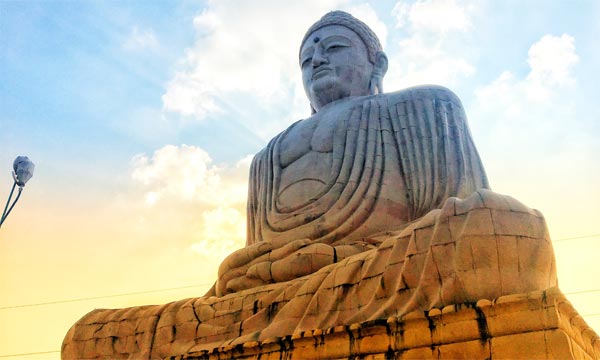This is going to be an eventful day with so many places to visit which begins with Kathmandu and Swayambhunath. The trip starts with Durbar Square which is the heart of Kathmandu. The spot was built between 12th to 18th centuries and displays brilliant architectural structures. The site is adorned with numerous fortresses, temples, religious shrines, figurines, fountains etc. exhibiting the marvelous construction work. The finely carved figurines and other stone engravings in the different monuments and structures inside Durbar Square beautifully display ancient as well as modern style of architecture. The palace entrance depicts stone-made lions and ancient inscriptions engraved on stone walls in various languages.
The trip moves ahead to the famous Mahadev and Parvati temple dedicated to Lord Shiva and Goddess Parvati. Next spot is Hanuman Dhoka which was built by ancient monarchs and spread across an area of 5 acres of land comprising of numerous palaces, shrines etc. with its courtyards built around middle years of 16th century.
In the 17th century during the reign of King PratapMalla, several sacred temples dedicated to various Hindu God and Goddesses were built. Narayan Shah too had his own contribution along with the royal family with stayed here till later years of the 19th century. Afternoon is free to visit other monuments and excursion to the nearby places of interest.
Swayambhunath is also famous for another sacred place of the Buddhists - Monkey Temple which is flocked by the monkeys in the temple complex. Swayambhunath is the oldest religious site in Nepal which dates back to 5th century CE. Swayambhu means “self-created” which relates as per SwaymbhuPurana narrating that the valley was filled with a lake with a single lotus grown in it.
The complex has a stupa, a number of shrines and temples all dating back to the Lichchav period. The stupa is magnificent for the famous Buddha’s eyes and eyebrows painted on it which gives an illusion that he is looking at all the four directions. Early morning every day before dawn hundreds of Buddhists and devotees circumambulate the stupa clockwise as a ritual of prayer and meditation.
Afternoon will be for visiting Bhadgaon and Pashupatinath Temple. Bhadgaon is a UNESCO World Heritage Site and is also known as Bhaktapur and Khwopa. The place is an ancient Newar town and was once the capital of Nepal during the Malla kingdom. Bhadgaon was in the trade route of India and Tibet in ancient times. It is popular for mask dances of various gods and goddesses. It is famous for traditional art, craft works, pottery, temples, ponds, architecture, monuments, local customs, culture, religion and festivals.
Up next is Pashupatinath Temple – the oldest Hindu temple in Kathmandu. Also a UNESCO World Heritage Site, the temple is the most important Shiva temples in the world for the Hindus. Only born-Hindus are allowed to step in to the temples while the non-Hindus may watch it from the other side of the river. Pashupatinath Temple dates back to 400 AD. The temple bears similarities with Nepalese pagoda style of architecture which abode the sacred linga. The two level roofs are of copper with gold covering. It has four main doors, all covered with silver sheets.
Overnight is in Kathmandu.


















